Discover 35 hidden attractions, cool sights, and unusual things to do in Dublin (Ireland). Don't miss out on these must-see attractions: Dublin Castle, O'Connell Street, and Science Gallery. Also, be sure to include Natural History Museum in your itinerary.
Below, you can find the list of the most amazing places you should visit in Dublin (Dublin).
Table of Contents
Dublin Castle
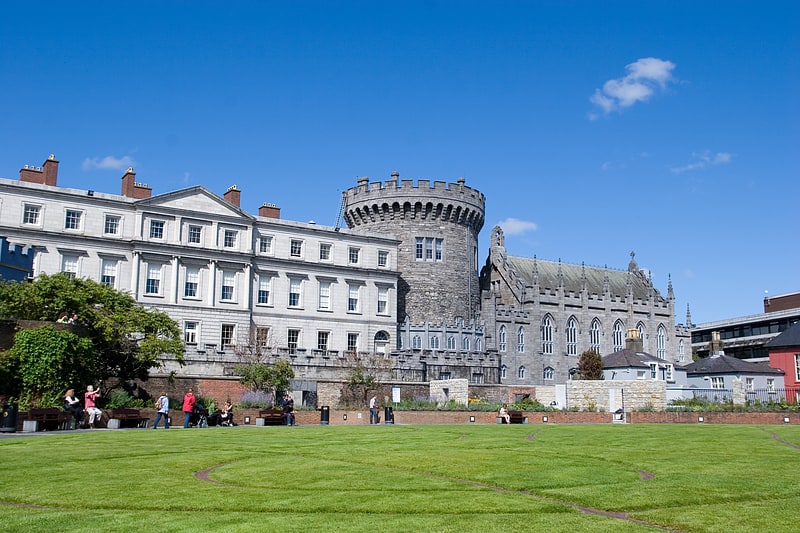
Castle in Dublin, Ireland. Dublin Castle is a major Irish government complex, conference centre, and tourist attraction, of significant historical importance. It is located off Dame Street in central Dublin.
Until 1922 it was the seat of the British government's administration in Ireland. Most of the current construction dates from the 18th century, though a castle has stood on the site since the days of King John, the first Lord of Ireland. The Castle served as the seat of English, then later British, government of Ireland under the Lordship of Ireland (1171–1541), the Kingdom of Ireland (1541–1800), and the United Kingdom of Great Britain and Ireland (1800–1922).
After the signing of the Anglo-Irish Treaty in December 1921, the complex was ceremonially handed over to the newly formed Provisional Government led by Michael Collins. It now hosts the inauguration of each President of Ireland and various State receptions.
The castle was built by the dark pool ("Dubh Linn") which gave Dublin its name. This pool lies on the lower course of the River Poddle before its confluence with the River Liffey; when the castle was built, the Liffey was much wider, and the castle was effectively defended by both rivers. The Poddle today runs under the complex.[1]
Address: Dublin, Dame Street
O'Connell Street
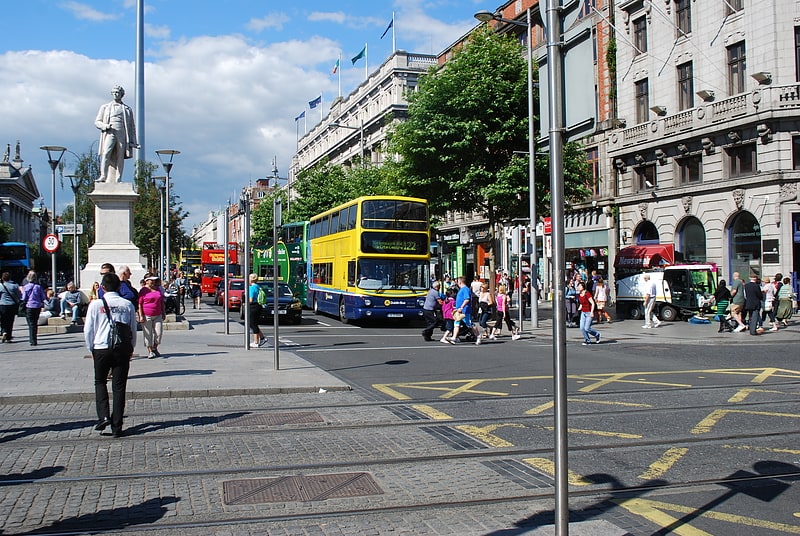
Thoroughfare in Dublin, Republic of Ireland. O'Connell Street is a street in the centre of Dublin, Ireland, running north from the River Liffey. It connects the O'Connell Bridge to the south with Parnell Street to the north and is roughly split into two sections bisected by Henry Street. The Luas tram system runs along the street.
During the 17th century, it was a narrow street known as Drogheda Street, named after Henry Moore, Earl of Drogheda. It was widened in the late 18th century by the Wide Streets Commission and renamed Sackville Street (Sráid Saicfil) after Lionel Sackville, 1st Duke of Dorset. In 1924, it was renamed in honour of Daniel O'Connell, a nationalist leader of the early 19th century, whose statue stands at the lower end of the street, facing O'Connell Bridge.
The street has played an important part in Irish history and features several important monuments, including statues of O'Connell and union leader James Larkin, and the Spire of Dublin. It formed the backdrop to one of the 1913 Dublin lock-out gatherings, the 1916 Easter Rising, the Irish Civil War of 1922, the destruction of Nelson's Pillar in 1966 and the Dublin Riots in 2006. In the late 20th century, a comprehensive plan was begun to restore the street to its original 19th-century character.[2]
Address: O'Connell Street, Dublin (Northside)
Science Gallery
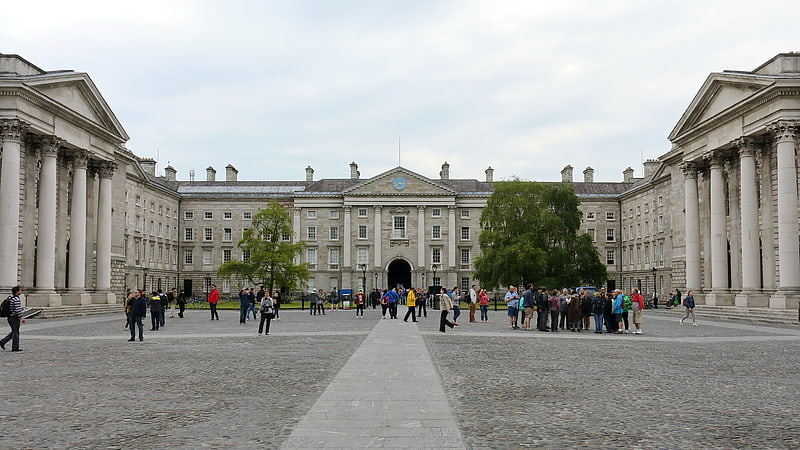
Art institute in Dublin, Republic of Ireland. Science Gallery is an international group of public science centres, developed from a concept by a group connected to Trinity College Dublin, Ireland. The first Science Gallery was opened in 2008 and housed in the Naughton Institute at Trinity College.
Each gallery is operated by a major academic institution in partnership with Science Gallery International and each holds various artistic exhibitions and lectures with a view to science outreach and art-science collaborations. Unlike most science centres, they have no permanent collections, but rather a series of three to four temporary exhibitions each year. Five galleries were established by the end of 2020, with several more planned.[3]
Address: Pearse St, Dublin (Southside)
Natural History Museum
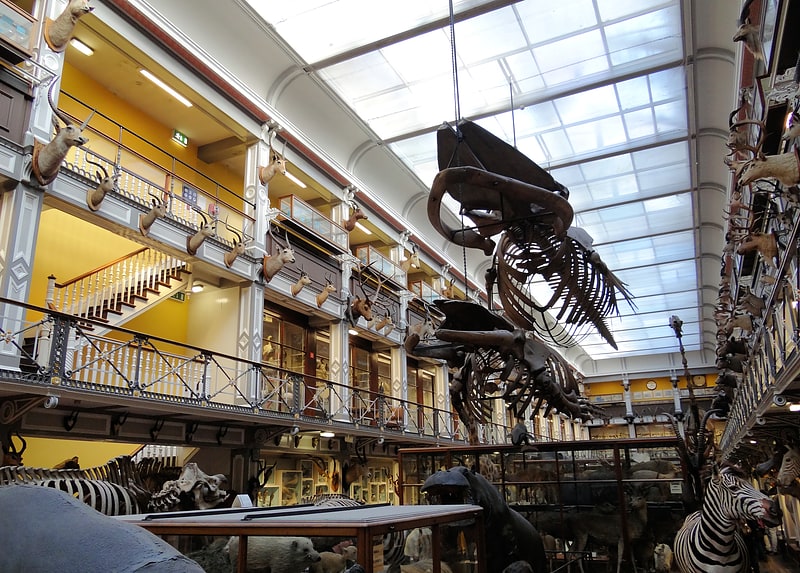
Museum in Dublin, Republic of Ireland. The National Museum of Ireland – Natural History, sometimes called the Dead Zoo, a branch of the National Museum of Ireland, is housed on Merrion Street in Dublin, Ireland. The museum was built in 1856 for parts of the collection of the Royal Dublin Society and the building and collection were later passed to the State.
The Natural History Collection comprised sub-collections for zoology, geology and botany; the geological collections have largely been held in storage from the 1960s, and the botanical collection was moved to National Botanic Gardens in 1970. However, the museum's zoological collection, and its building, have changed little since Victorian times, and it is sometimes described as a "museum of a museum" or a "stately home of death".
Admission has been free of charge for decades, and attendance grew from 106,000 in 2007 to over 336,000 in 2017, and 388,000 in 2019, despite chronic staff shortages, and two of its four floors being closed since 2007. After temporary closures due to the Covid-19 pandemic, the museum closed in November 2020 for an indefinite period for major renovations, with the collections being moved over a period of around ten months, as detailed on an official museum Twitter channel.[4]
Address: Merrion St Upper, Dublin (Southside)
Guinness Storehouse
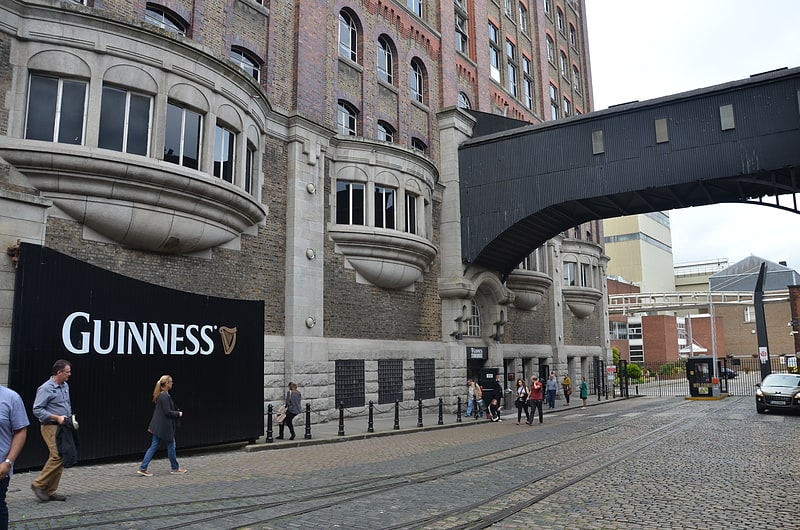
Brewery in Dublin, Republic of Ireland. Guinness Storehouse is a tourist attraction at St. James's Gate Brewery in Dublin, Ireland. Since opening in 2000, it has received over twenty million visitors.
The Storehouse covers seven floors surrounding a glass atrium shaped in the form of a pint of Guinness. The ground floor introduces the beer's four ingredients (water, barley, hops and yeast), and the brewery's founder, Arthur Guinness. Other floors feature the history of Guinness advertising and include an interactive exhibit on responsible drinking. The seventh floor houses the Gravity Bar with views of Dublin and where visitors may drink a pint of Guinness included in the price of admission.[5]
Address: Market Street, D8 Dublin (Southside)
Grafton Street
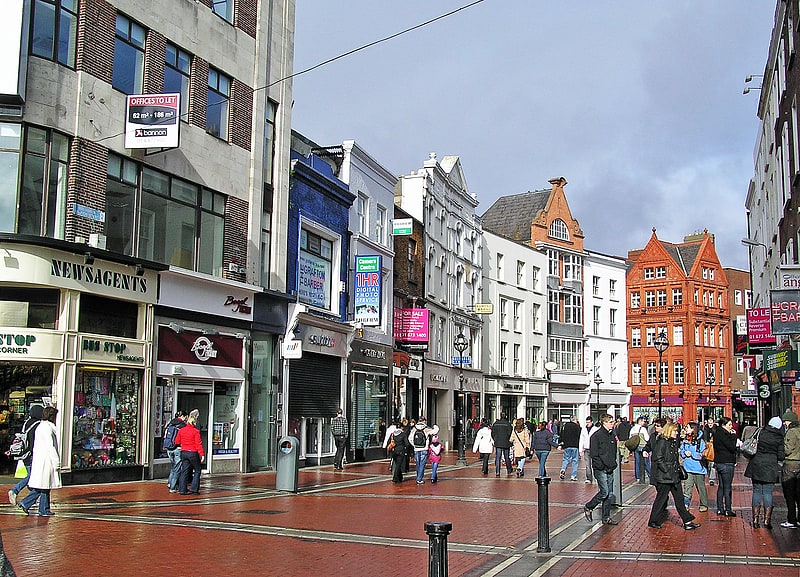
Street in Dublin, Ireland. Grafton Street is one of the two principal shopping streets in Dublin city centre. It runs from St Stephen's Green in the south to College Green in the north.
The street was developed from a laneway from the early 1700s, and its line was shaped by the now-culverted River Steyne. Initially a fashionable residential street with some commercial activity, the character of Grafton Street changed after it was connected to the Carlisle Bridge and came to form part of a cross-city route. It suffered from dilapidation and prostitution through the 19th century, with several run-down buildings. During the 20th century, it became known for the coffee house Bewley's, mid- and up-market shopping, and as a popular spot for buskers. It has been assessed as one of the most expensive main retail streets in the world on which to rent.[6]
Address: Grafton Street, Dublin (Southside)
St Patrick's Cathedral
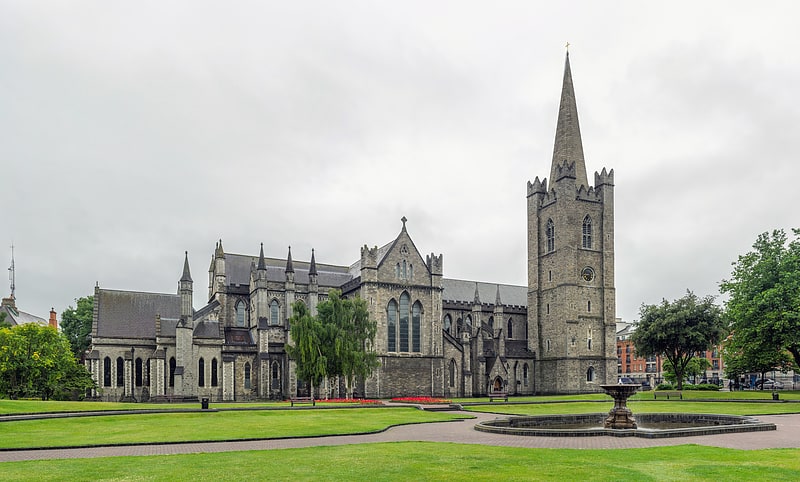
Medieval building with musical recitals. Saint Patrick's Cathedral in Dublin, Ireland, founded in 1191, is the national cathedral of the Church of Ireland. Christ Church Cathedral, also a Church of Ireland cathedral in Dublin, is designated as the local cathedral of the Diocese of Dublin and Glendalough.[7]
Address: St Patrick's Close, Dublin (Southside)
Christ Church Cathedral
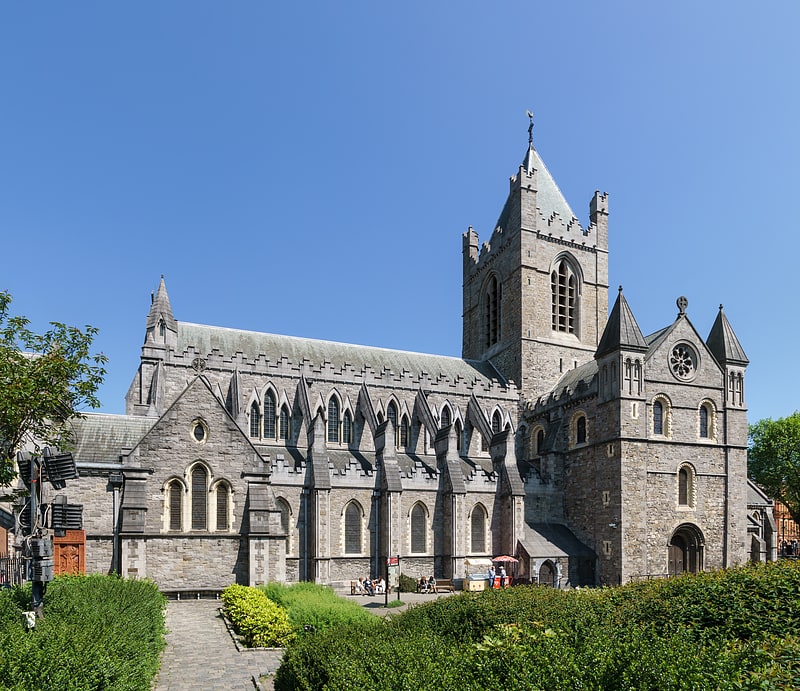
Medieval edifice with a crypt and cafe. Christ Church Cathedral, more formally The Cathedral of the Holy Trinity, is the cathedral of the United Dioceses of Dublin and Glendalough and the cathedral of the ecclesiastical province of the United Provinces of Dublin and Cashel in the Church of Ireland. It is situated in Dublin, Ireland, and is the elder of the capital city's two medieval cathedrals, the other being St Patrick's Cathedral.
The cathedral was founded in the early 11th century under the Viking king Sitric Silkenbeard. It was rebuilt in stone in the late 12th century under the Norman potentate Strongbow, and considerably enlarged in the early 13th century, using Somerset stones and craftsmen. A partial collapse in the 16th century left it in poor shape and the building was extensively renovated and rebuilt in the late 19th century, giving it the form it has today, including the tower, flying buttresses, and distinctive covered footbridge.[8]
Address: 8 Christchurch Pl, Dublin (Southside)
Kilmainham Gaol
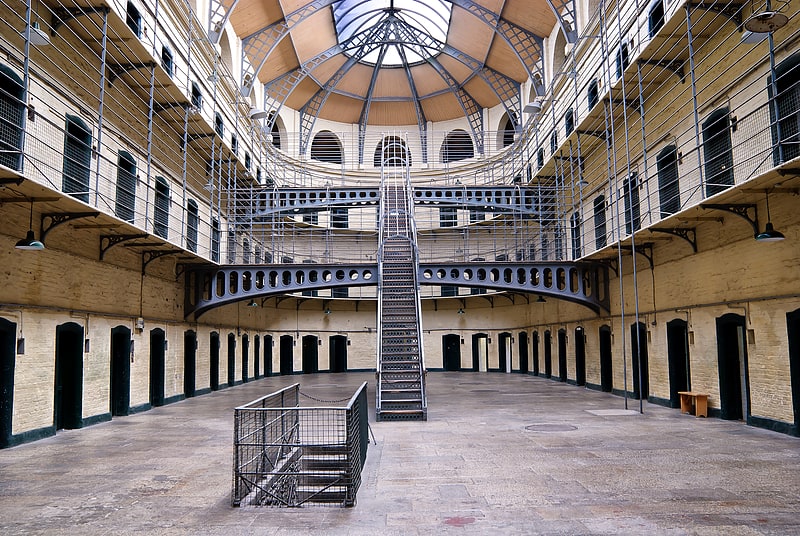
Prison telling stories of Ireland's past. Kilmainham Gaol is a former prison in Kilmainham, Dublin, Ireland. It is now a museum run by the Office of Public Works, an agency of the Government of Ireland. Many Irish revolutionaries, including the leaders of the 1916 Easter Rising, were imprisoned and executed in the prison by the orders of the UK Government.[9]
Address: Inchicore Rd, D08 RK28 Dublin 8 (Southside)
Phoenix Park
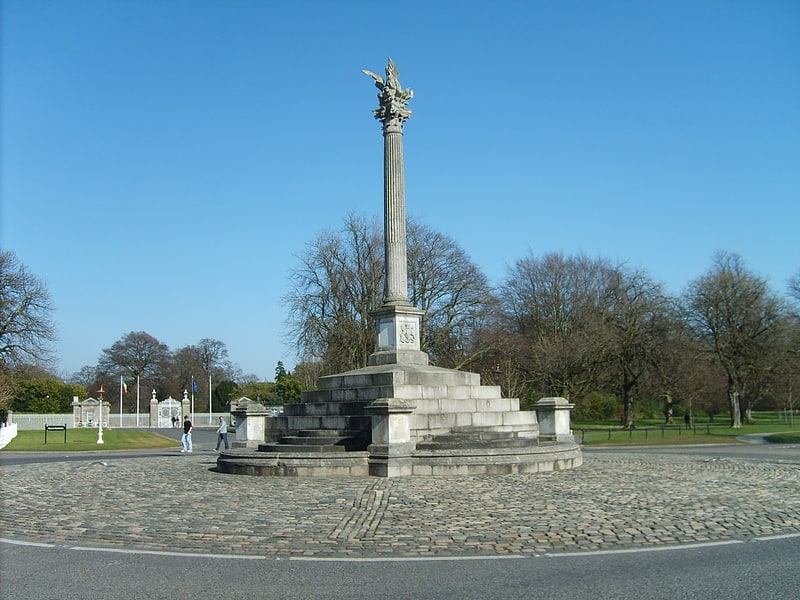
Enormous green space housing Dublin Zoo. The Phoenix Park is a large urban park in Dublin, Ireland, lying 2–4 km west of the city centre, north of the River Liffey. Its 11 km perimeter wall encloses 707 hectares of recreational space. It includes large areas of grassland and tree-lined avenues, and since the 17th century has been home to a herd of wild fallow deer. The Irish Government is lobbying UNESCO to have the park designated as a world heritage site.[10]
Address: Parkgate St., 8 Dublin (Northside)
Henry Street
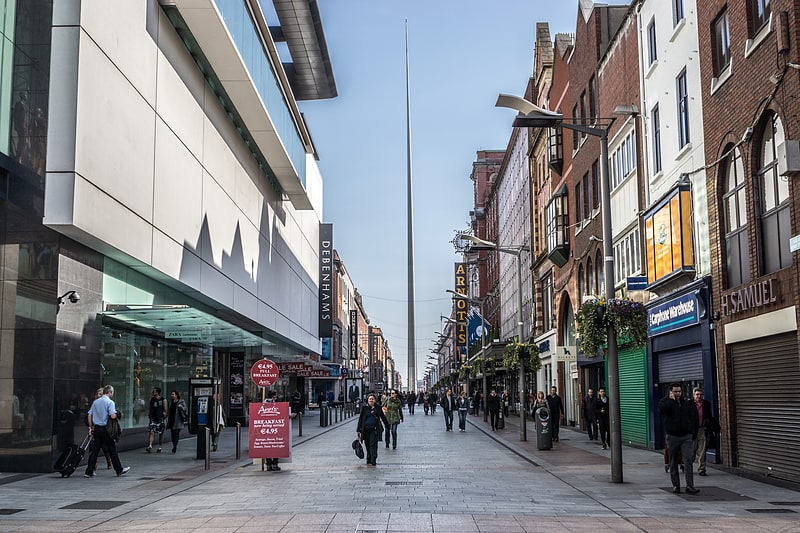
Street in Dublin, Ireland. Henry Street is located on Dublin's Northside and is one of the two principal shopping streets of Dublin.[11]
Address: Henry St, Dublin (Northside)
Spire of Dublin
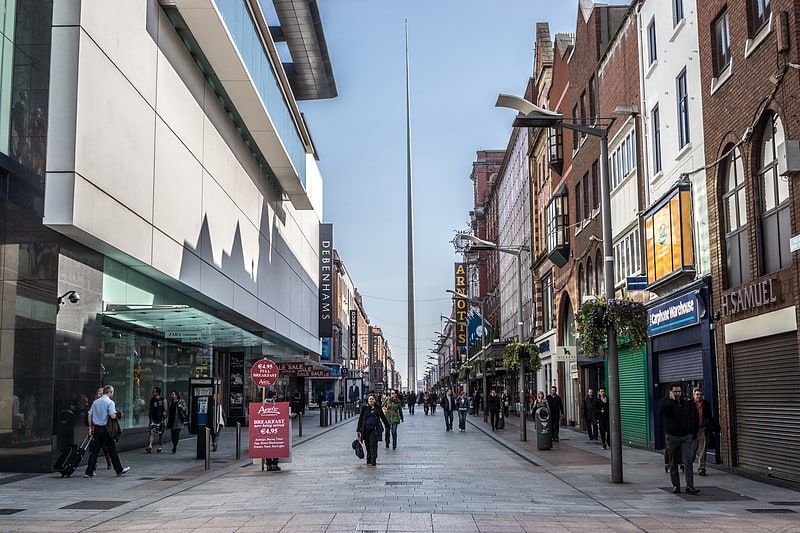
Towering stainless steel monument. The Spire of Dublin, alternatively titled the Monument of Light, is a large, stainless steel, pin-like monument 120 metres in height, located on the site of the former Nelson's Pillar and statue of William Blakeney on O'Connell Street in Dublin, Ireland.[12]
Address: O'Connell St, 1 Dublin (Northside)
The Stag's Head
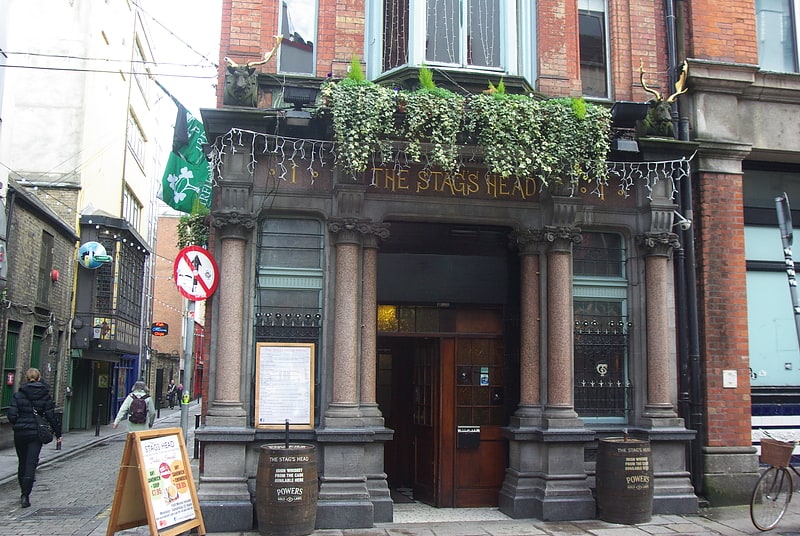
Bar in Dublin, Republic of Ireland. The Stag's Head is a pub on the corner of Dame Court and Dame Lane in Dublin, Ireland.
Records of a pub on the site of the Stag's Head date to 1770 (original construction by a Mr. Tyson) and 1895 (extensive rebuilding). The pub is known for the preservation of its Victorian interior and the restored advertising mosaic on the footpath on Dame Street, some distance from the pub's doors.
The name "Tyson", and Mr. Tyson's initials, decorate the old clock and the wrought-iron of the exterior. Mr. Tyson is also believed to have contributed to the construction of a permanent pavement over Dame Lane.
There is a stuffed fox on the ground floor snug of the Stag's Head, while a large stag's head decorates the main bar.
The pub has appeared in many films, notably A Man of No Importance, starring Albert Finney and Educating Rita starring Michael Caine and Julie Walters. Filming for Penny Dreadful also took place both inside and outside the pub in February 2014.
The establishment was sold in 2005 for €5.8M and bought by the Louis Fitzgerald Group. A number of changes have made to the pub since the sale, most notably the introduction of a television set to the bar area.[13]
Address: 1 Dame Ct, D02 TW84 Dublin (Southside)
Dawson Street
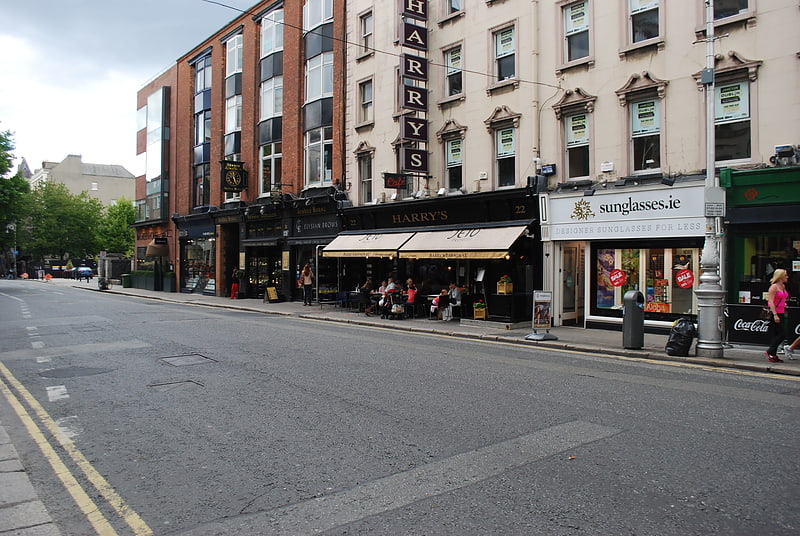
Street in Dublin, Ireland. Dawson Street is a street on the southern side of central Dublin, running from St Stephen's Green to the walls of Trinity College Dublin. It is the site of the residence of the Lord Mayor of Dublin, the Mansion House.[14]
Dublin Zoo

Popular naturally landscaped zoo. Dublin Zoo, in Phoenix Park, Dublin, is a zoo in Ireland, and one of Dublin's most popular attractions. Established and designed in 1830 by Decimus Burton, it opened the following year. The zoo describes its role as conservation, study, and education. Its stated mission is to "work in partnership with zoos worldwide to make a significant contribution to the conservation of the endangered species on Earth".
Covering over 28 hectares (69 acres) of Phoenix Park, it is divided into areas named Asian Forests, Orangutan Forest, The Kaziranga Forest Trail, Fringes of the Arctic, Sea Lion Cove, African Plains, Roberts House, House of Reptiles, City Farm and South American House.[15]
Wicklow Street
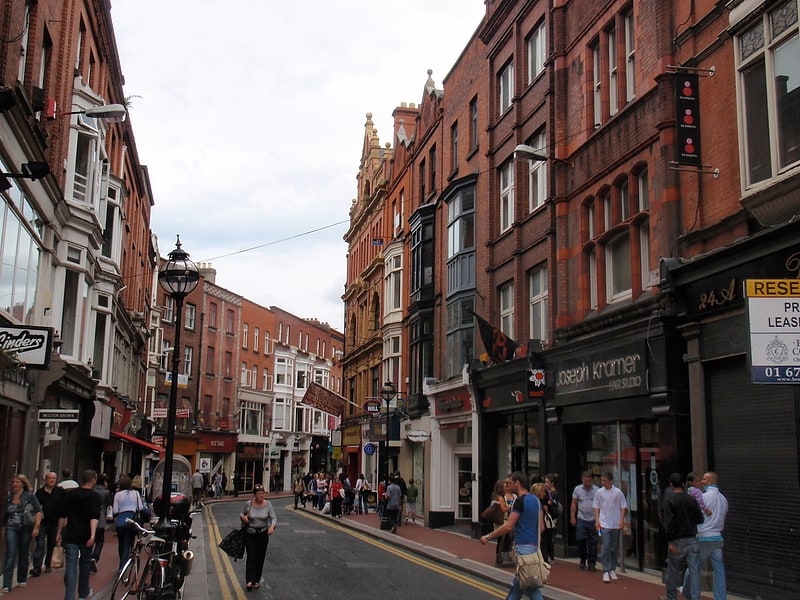
Street in Dublin, Ireland. Wicklow Street is an established shopping street located in Dublin city centre, running from Grafton Street in the east to Exchequer Street and South William Street in the west.[16]
Address: Wicklow St, Dublin (Southside)
National Gallery of Ireland
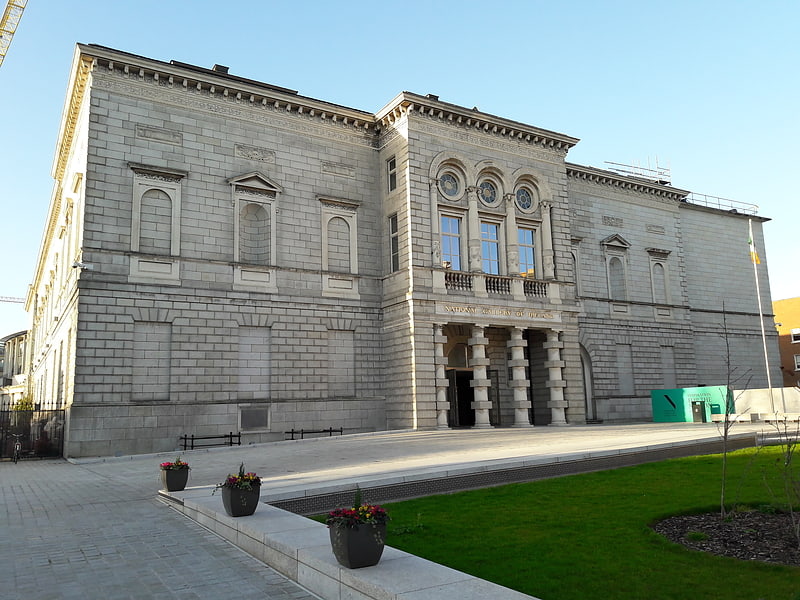
Ireland's national art collection. The National Gallery of Ireland houses the national collection of Irish and European art. It is located in the centre of Dublin with one entrance on Merrion Square, beside Leinster House, and another on Clare Street. It was founded in 1854 and opened its doors ten years later. The gallery has an extensive, representative collection of Irish paintings and is also notable for its Italian Baroque and Dutch masters painting. The current director is Sean Rainbird.[17]
Address: Merrion Square West, 2 Dublin (Southside)
Ha'penny Bridge

Landmark 1800s pedestrian bridge. The Ha'penny Bridge, known later for a time as the Penny Ha'penny Bridge, and officially the Liffey Bridge, is a pedestrian bridge built in May 1816 over the River Liffey in Dublin, Ireland. Made of cast iron, the bridge was cast in Shropshire, England.[18]
Address: 14 Bachelors Walk, Dublin (Northside)
The National Wax Museum Plus
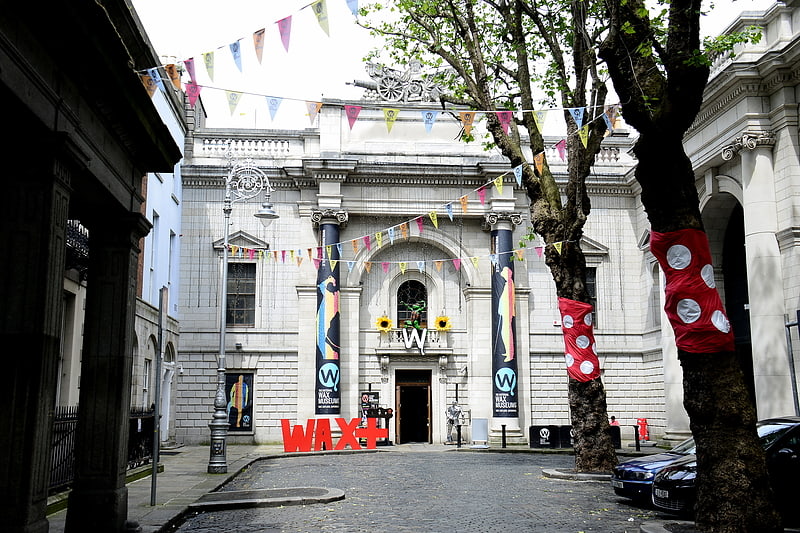
Museum in Dublin, Republic of Ireland. The National Wax Museum Plus is a waxworks in Dublin, Ireland. First opened in 1983 as the National Wax Museum, it was later relocated and renamed.[19]
Address: 22 -25 Westmoreland Street, 2 Dublin (Southside)
National Botanic Gardens
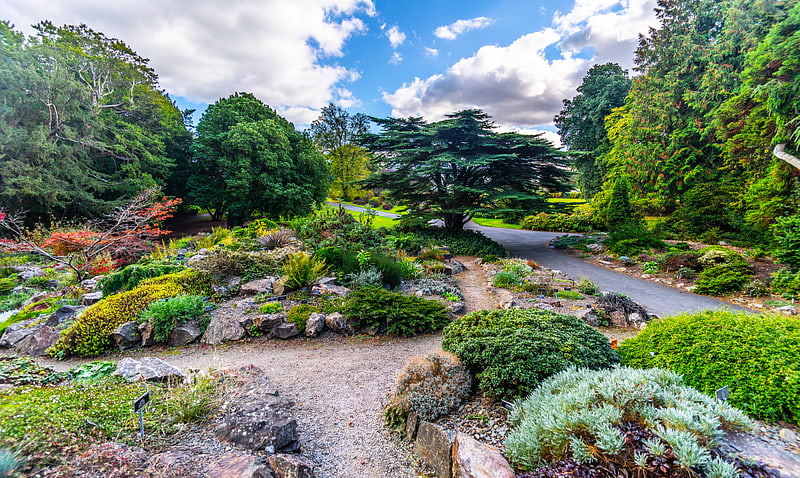
Formal and natural landscapes. The National Botanic Gardens is a botanical garden in Glasnevin, 5 km north-west of Dublin city centre, Ireland. The 19.5 hectares are situated between Glasnevin Cemetery and the River Tolka where it forms part of the river's floodplain.
The gardens were founded in 1795 by the Dublin Society (later the Royal Dublin Society) and are today in State ownership through the Office of Public Works. They house approximately 20,000 living plants and many millions of dried plant specimens. There are several architecturally notable greenhouses. The Glasnevin site is the headquarters of the National Botanic Gardens of Ireland which has a satellite garden and arboretum at Kilmacurragh in County Wicklow.
The gardens participate in national and international initiatives for biodiversity conservation and sustainable development. Director of the Gardens Dr. Matthew Jebb, is also Chairman of PlantNetwork: The Plant Collections Network of Britain and Ireland. It is Ireland's seventh most visited attraction, and the second most visited free attraction.[20]
Address: National Botanic Gardens Botanic Road, 9 Dublin (Northside)
Parnell Street
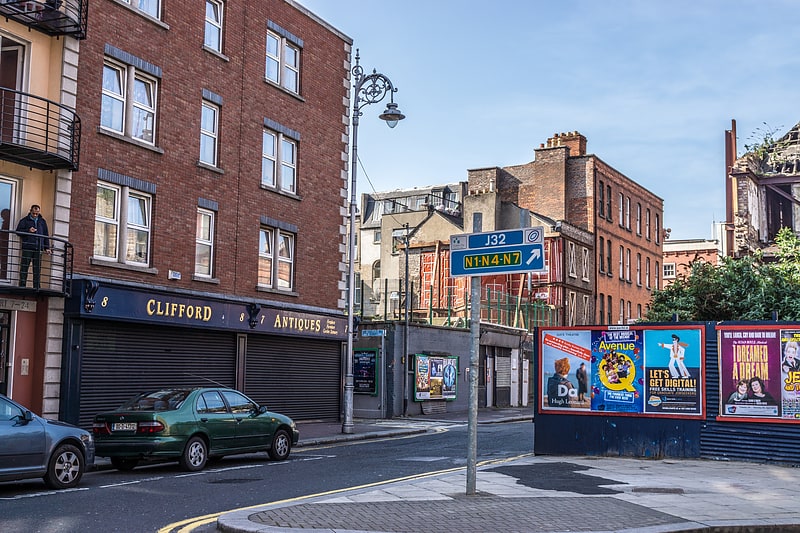
Street in Dublin, Ireland. Parnell Street is a street in Dublin, Ireland, which runs from Capel Street in the west to Gardiner Street and Mountjoy Square in the east. It is at the north end of O'Connell Street, where it forms the south side of Parnell Square.[21]
Address: Dublin_s O'Connell Square, Dublin (Northside)
Croke Park

Stadium in Dublin, Ireland. Croke Park is a Gaelic games stadium in Dublin, Ireland. Named after Archbishop Thomas Croke, it is referred to as Croker by GAA fans and locals. It serves as both the principal national stadium of Ireland and headquarters of the Gaelic Athletic Association. Since 1891 the site has been used by the GAA to host Gaelic sports, including the annual All-Ireland in Gaelic football and hurling.
A major expansion and redevelopment of the stadium ran from 1991 to 2005, raising capacity to its current 82,300 spectators. This makes Croke Park the third-largest stadium in Europe, and the largest not usually used for association football in Europe.
Other events held at the stadium include the opening and closing ceremonies of the 2003 Special Olympics, and numerous musical concerts. In 2012, Irish pop group Westlife sold out the stadium in record-breaking time: less than 5 minutes. From 2007 to 2010, Croke Park hosted home matches of the Ireland national rugby union team and the Republic of Ireland national football team, while their new Aviva Stadium was constructed. This use of Croke Park for non-Gaelic sports was controversial and required temporary changes to GAA rules. In June 2012, the stadium hosted the closing ceremony of the 50th International Eucharistic Congress during which Pope Benedict XVI gave an address over video link.[22]
Address: Jones' Rd, Dublin (Northside)
Dublinia
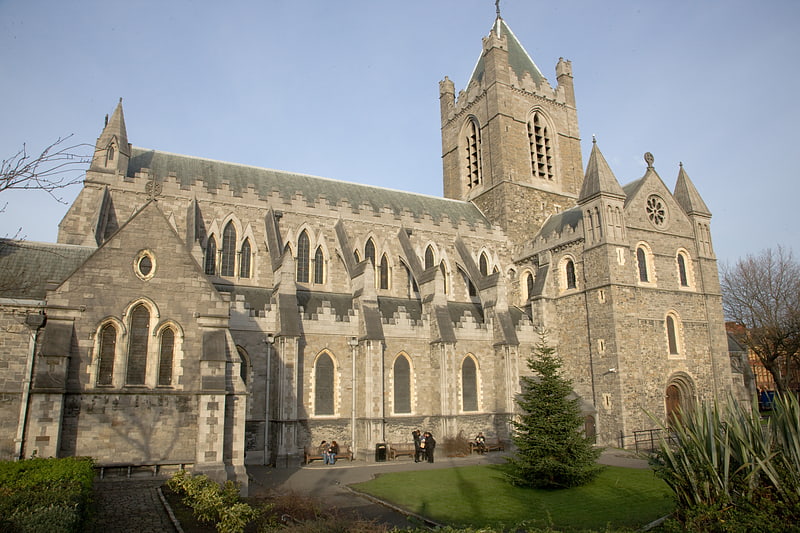
Museum in Dublin, Ireland. Dublinia is a historical recreation museum and visitor attraction in Dublin, Ireland, focusing on the Viking and Medieval history of the city. Dublinia is located in a part of Dublin's Christ Church Cathedral, known as the Synod hall.
Dublinia features historical reenactment, with actors playing the roles of Vikings and Medieval Dubliners (in full costume) and encourages visitors to join in. It has recreations of Viking and Medieval era buildings (houses, etc) and street scenes.
The exhibition was opened in 1993, and was redeveloped in 2010 at a cost of €2 million. As of 2010, the museum was attracting over 125,000 visitors per annum.[23]
Address: St. Michael's Hill, 8 Dublin (Southside)
Dublin Writers Museum
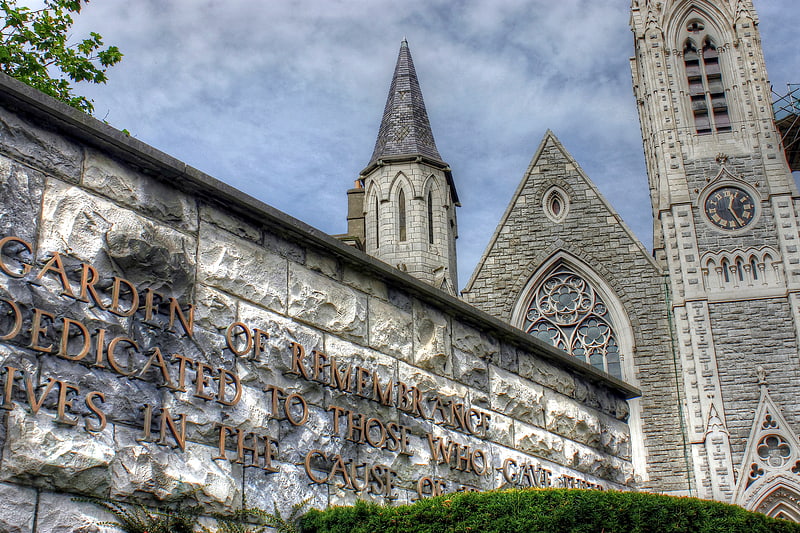
Literary history in 18th-century mansion. The Dublin Writers Museum was opened in November 1991 at No 18, Parnell Square, Dublin, Ireland. The museum occupies an original 18th-century house, which accommodates the museum rooms, library, gallery, and administration area. The annexe behind it has a coffee shop and bookshop on the ground floor and exhibition and lecture rooms on the floors above. Dublin stuccadore Michael Stapleton decorated the upstairs gallery. The Irish Writers' Centre, next door in No 19, contains the meeting rooms and offices of the Irish Writers' Union, the Society of Irish Playwrights, the Irish Children's Book Trust and the Irish Translators' & Interpreters' Association. The basement beneath both houses is occupied by the Chapter One restaurant.
The Museum was established to promote interest, through its collection, displays and activities, in Irish literature as a whole and in the lives and works of individual Irish writers. Through its association with the Irish Writers' Centre it provides a link with living writers and the international literary scene. On a national level it acts as a centre, simultaneously pulling together the strands of Irish literature and complementing the smaller, more detailed museums devoted to individuals like James Joyce, George Bernard Shaw, William Butler Yeats and Patrick Pearse. It functions as a place where people can come from Dublin, Ireland and abroad to experience the phenomenon of Irish writing both as history and as actuality.
The writers featured in the Museum are those who have made an important contribution to Irish or international literature or, on a local level, to the literature of Dublin. It is a view of Irish literature from a Dublin perspective.
On display in the museum are literary ephemera and memorabilia, including a detailed replica of The Book of Kells, Samuel Beckett's phone, a letter from 'tenement aristocrat' Brendan Behan to his brother, the Abbey Theatre ephemera of Lady Gregory, a 1910 letter from W.B. Yeats, opening night programmes for Oscar Wilde plays An Ideal Husband and Lady Windermere's Fan, an 1804 edition of Gulliver's Travels by Jonathan Swift, a third edition of The Crock of Gold by James Stephens, a first edition of James Joyce's Pomes Penyeach, and a first edition of Bram Stoker's Dracula along with an autograph letter from Stoker.
The museum also includes portraits of Irish writers, including fine originals by artists such as Patrick Swift, Reginald Gray, Edward McGuire and Harry Kernoff.
David Norris launched his presidential campaign ahead of the Irish presidential election at Dublin Writers Museum on 5 October 2011.[24]
Address: 18-19 Parnell Square North, 1 Dublin (Northside)
The Little Museum of Dublin
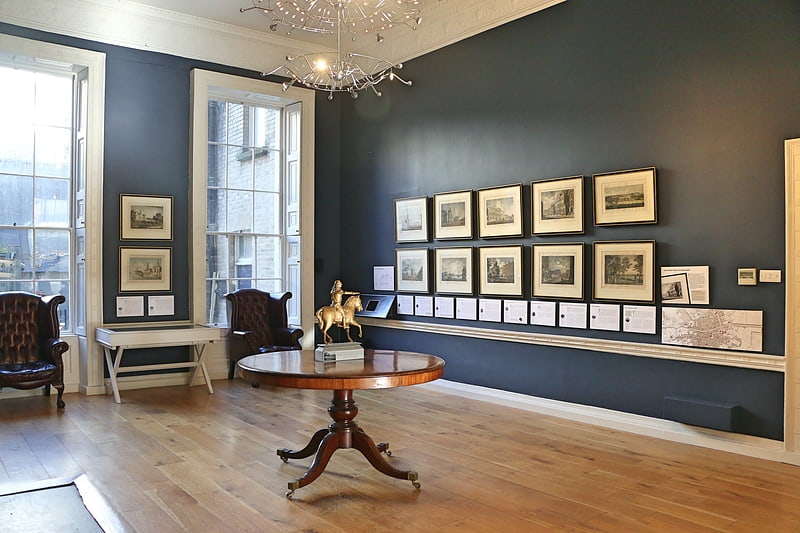
Museum in Dublin, Republic of Ireland. The Little Museum of Dublin is a local history museum situated at St Stephen's Green, Dublin, Ireland. The museum is located in an 18th-century Georgian townhouse owned by Dublin City Council.[25]
Address: 15 St. Stephen's Green, D02 XY76 Dublin (Southside)
EPIC The Irish Emigration Museum
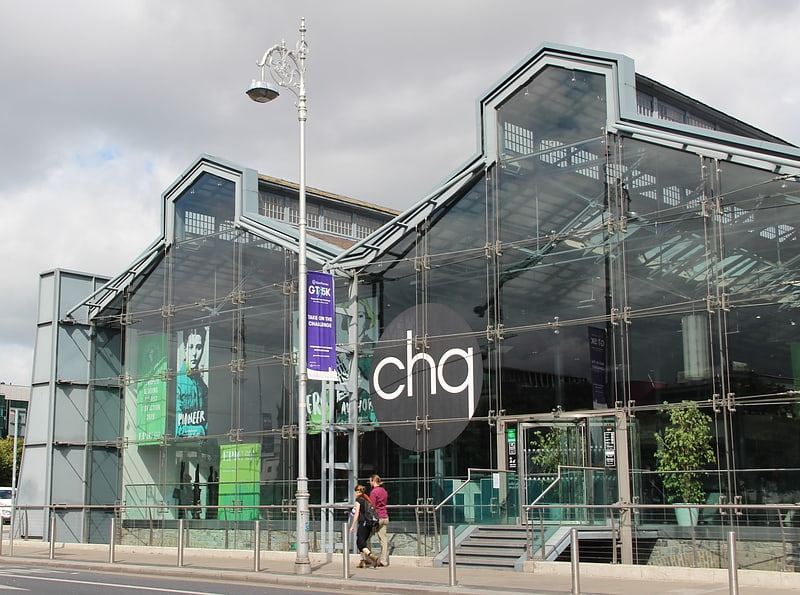
Museum in Dublin, Ireland. EPIC The Irish Emigration Museum, located in Dublin's Docklands, covers the history of the Irish diaspora and emigration to other countries. It was designed by the London-based design firm Event Communications, and was voted as "Europe's Leading Tourist Attraction" at the 2019, 2020 and 2021 World Travel Awards.[26]
Address: Unit C1/2 The Chq Building North Wall Quay, D01 T6K4 Dublin (Northside)
Chester Beatty Library
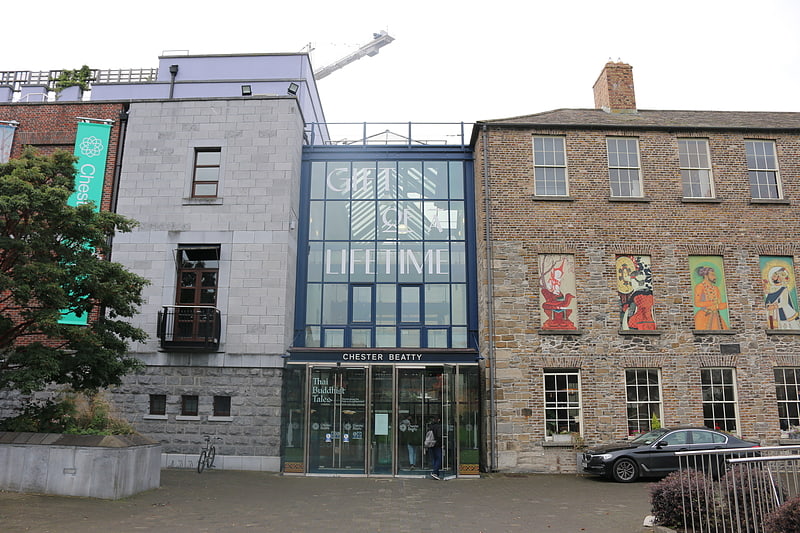
Rare religious and artistic manuscripts. The Chester Beatty Library, now known as the Chester Beatty, is a museum and library in Dublin. It was established in Ireland in 1950, to house the collections of mining magnate, Sir Alfred Chester Beatty. The present museum, on the grounds of Dublin Castle, opened on 7 February 2000, the 125th anniversary of Beatty's birth and was named European Museum of the Year in 2002.
The museum's collections are displayed in two galleries: "Sacred Traditions" and "Arts of the Book". Both displays exhibit manuscripts, miniature paintings, prints, drawings, rare books and some decorative arts from the Persian, Islamic, East Asian and Western Collections. The Chester Beatty is one of the premier sources for scholarship in both the Old and New Testaments and is home to one of the most significant collections of Western, Islamic and East & South East Asian artefacts. The museum also offers numerous temporary exhibitions, many of which include works of art on loan from foreign institutions and collections. The museum contains a number of priceless objects, including one of the surviving volumes of the first illustrated Life of the Prophet and the Gospel of Mani believed to be the last remaining artefact from Manichaeism.[27]
Address: Dublin Castle Chester Beatty Library Castle Street, D02 AD92 Dublin (Southside)
Wellington Monument
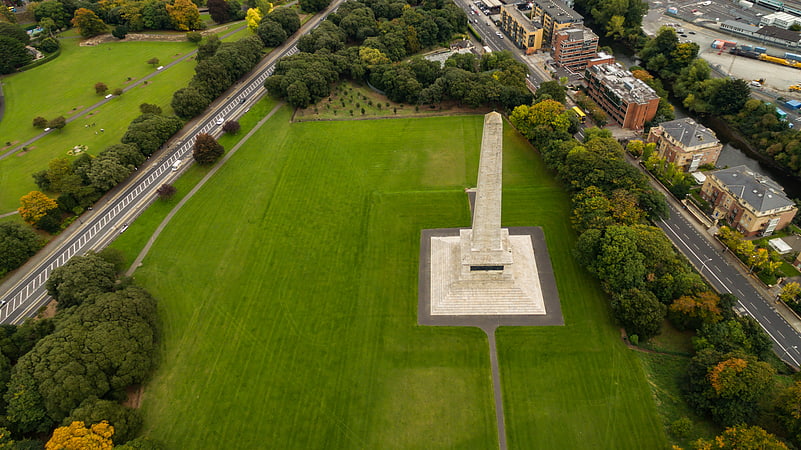
Monument in Dublin, Ireland. The Wellington Monument, or more correctly the Wellington Testimonial, is an obelisk located in the Phoenix Park, Dublin, Ireland.
The testimonial is situated at the southeast end of the Park, overlooking Kilmainham and the River Liffey. The structure is 62 metres (203 ft) tall, making it the largest obelisk in Europe.[28]
Talbot Street

Street in Dublin, Ireland. Talbot Street is a city-centre street located on Dublin's Northside, near to Dublin Connolly railway station. It was laid out in the 1840s and a number of 19th century buildings still survive. The Irish Life Mall is on the street.[29]
Address: Sráid Thalbóid, 1 Dublin (Northside)
Irish Museum of Modern Art
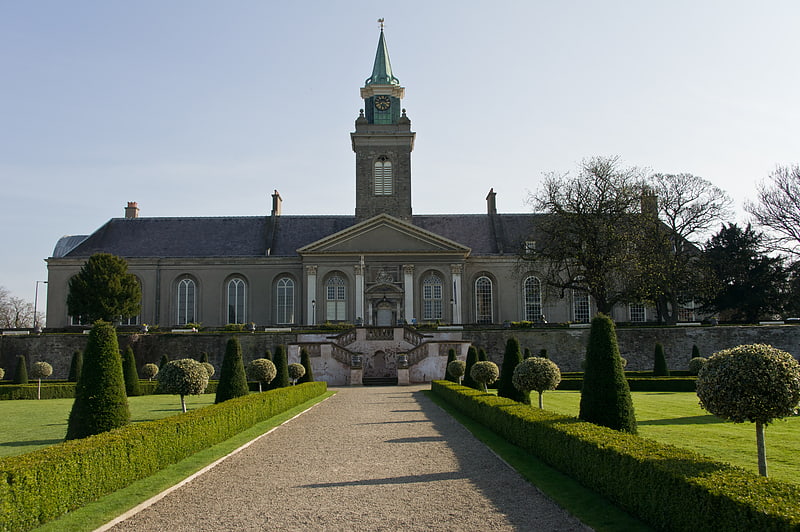
Modern art in a 17th-century hospital. The Irish Museum of Modern Art also known as IMMA, is Ireland's leading national institution for the collection and presentation of modern and contemporary art. Located in Kilmainham, Dublin, the Museum presents a wide variety of art in a changing programme of exhibitions, which regularly includes bodies of work from its own collection and its education and community department. It also aims to create more widespread access to art and artists through its studio and national programmes.
The Museum’s mission is to foster within society an awareness, understanding and involvement in the visual arts through policies and programmes which are excellent, innovative and inclusive.[30]
Address: Royal Hospital, 8 Dublin (Southside)
St. Stephen's Green
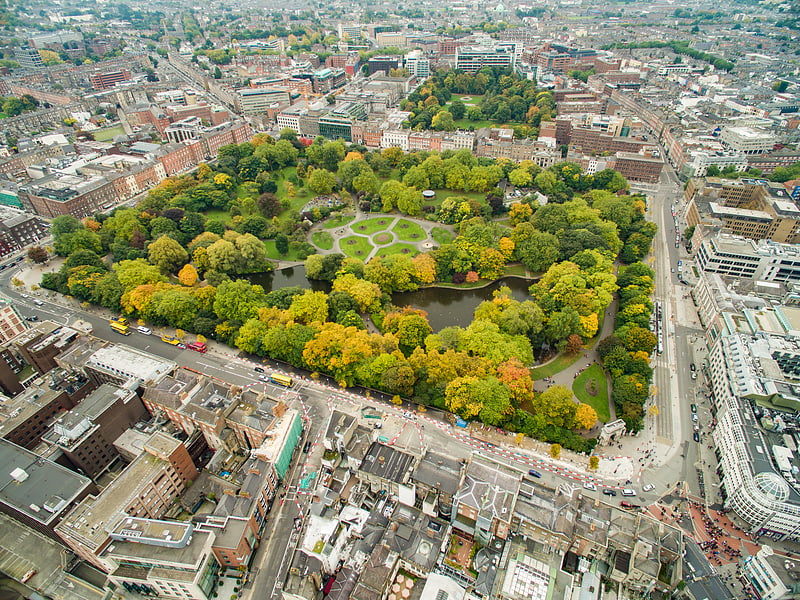
Park with original Victorian layout. St Stephen's Green is a garden square and public park located in the city centre of Dublin, Ireland. The current landscape of the park was designed by William Sheppard. It was officially re-opened to the public on Tuesday, 27 July 1880 by Lord Ardilaun. The square is adjacent to one of Dublin's main shopping streets, Grafton Street, and to a shopping centre named after it, while on its surrounding streets are the offices of a number of public bodies as well as a stop on one of Dublin's Luas tram lines. It is often informally called Stephen's Green. At 22 acres, it is the largest of the parks in Dublin's main Georgian garden squares. Others include nearby Merrion Square and Fitzwilliam Square.
The park is rectangular, surrounded by streets that once formed major traffic arteries through Dublin city centre, although traffic management changes implemented in 2004 during the course of the Luas works have greatly reduced the volume of traffic. These four bordering streets are called, respectively, St Stephen's Green North, St Stephen's Green South, St Stephen's Green East and St Stephen's Green West.[31]
Address: at the top end of Grafton St, 2 Dublin (Southside)
Old Jameson Distillery
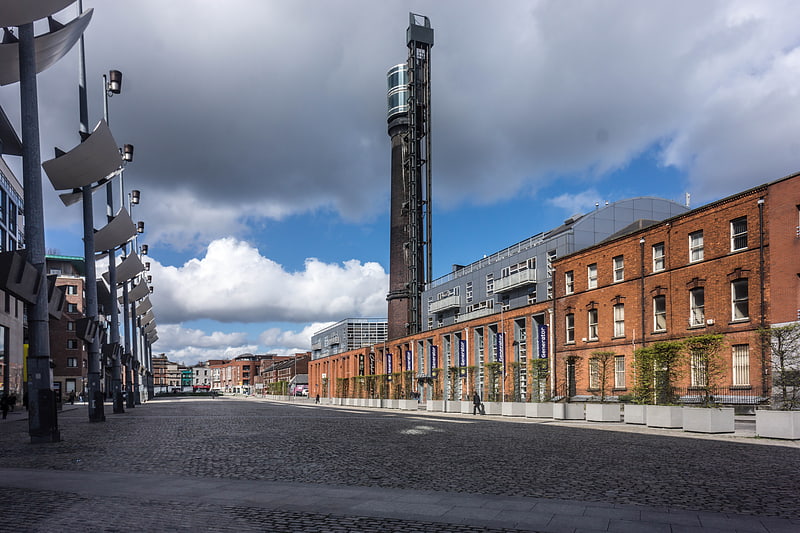
Distillery in Dublin, Ireland. Jameson Distillery Bow St. is an Irish whiskey tourist attraction located just off Smithfield Square in Dublin, Ireland. Jameson Distillery Bow St. is the original site where Jameson Irish Whiskey was distilled until 1971. It is now a visitors centre that provides guided tours, tutored whiskey tastings, JJs bar and a gift shop.[32]
Address: Bow St, 7 Dublin (Northside)
James Joyce Tower and Museum
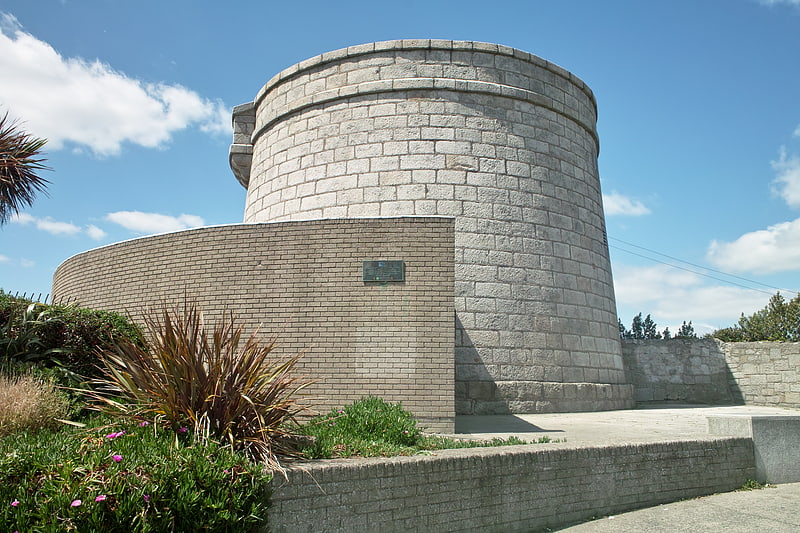
Squat defensive tower with Joyce museum. The James Joyce Tower and Museum is a Martello tower in Sandycove, Dublin, where James Joyce spent six nights in 1904. The opening scenes of his 1922 novel Ulysses take place here, and the tower is a place of pilgrimage for Joyce enthusiasts, especially on Bloomsday. Admission is free.[33]
Address: Fortyfoot, Sandycove Point, Dublin
Temple Bar Gallery and Studios
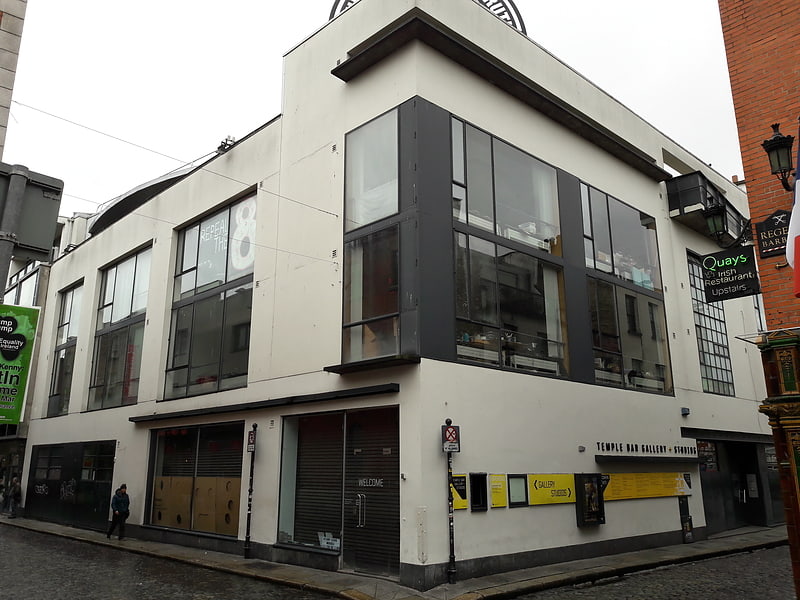
Art gallery in Dublin, Republic of Ireland. Temple Bar Gallery + Studios is a contemporary gallery and visual artist studio space located in the centre of Dublin in Temple Bar.[34]
Address: 5-9 Temple Bar, 2 Dublin (Southside)
National Museum of Ireland – Archaeology
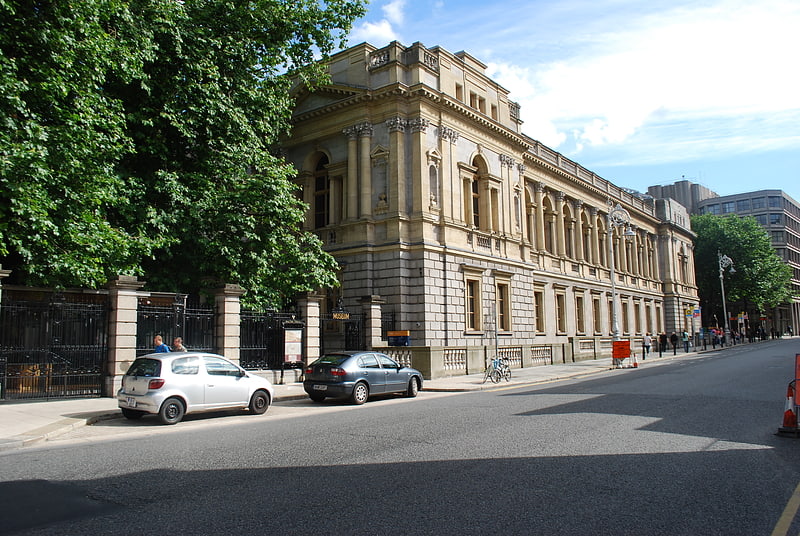
The National Museum of Ireland – Archaeology is a branch of the National Museum of Ireland located on Kildare Street in Dublin, Ireland, that specialises in Irish and other antiquities dating from the Stone Age to the Late Middle Ages.
The museum was established under the Science and Art Museum Act of 1877. Before, its collections had been divided between the Royal Dublin Society and the Natural History Museum on Merrion Street. The museum was built by the father and son architects Thomas Newenham Deane and Thomas Manly Deane.
The NMI's collection contains artifacts from prehistoric Ireland including bog bodies, Iron and Bronze Age objects such as axe-heads, swords and shields in bronze, silver and gold, with the earliest dated to c. 7000 BC. It holds the world's most substantial collection post-Roman era Irish medieval art (known as Insular art). In addition, it houses a substantial collection of medieval metalwork, Viking artefacts including swords and coins, and classical objects from Ancient Egypt, Cyprus and the Roman world.[35]
Address: Kildare Street, Dublin (Southside)